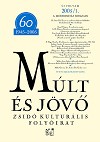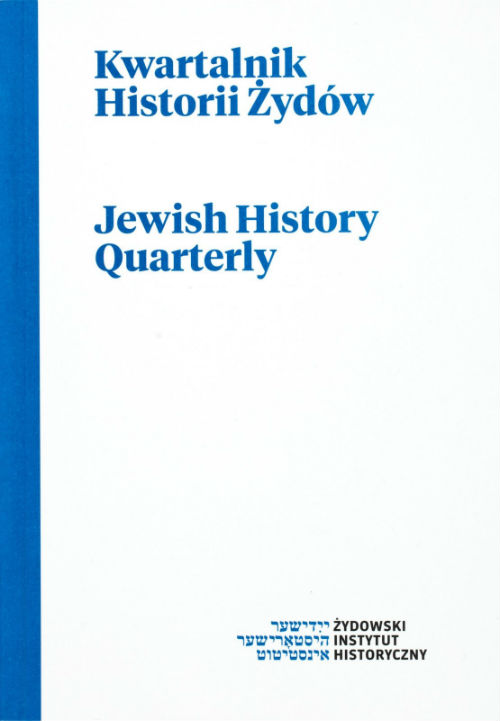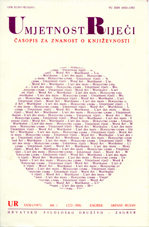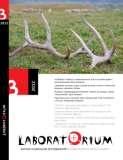
The Conscience of the Rich (a review)
A gazdagok lelkiismerete (könyvismertetés)
Slomo Avineri, the well-know Israeli political scientist, writes about the carrier of György Soros himself seen through Jewish eyes.
More...
Slomo Avineri, the well-know Israeli political scientist, writes about the carrier of György Soros himself seen through Jewish eyes.
More...Keywords: Fojnica; Fojnica u dokumentima Arhiva Bosne i Hercegovine; izložba
Izložba „Fojnica u dokumentima Arhiva Bosne i Hercegovine“ otvorena je u franjevačkom samostanu Sv. Duha, 18. marta 2011. godine, na dan fojničke općine. Ona predstavlja, naravno, mali izbor dokumenata o Fojnici koji se čuvaju u Arhivu Bosne i Hercegovine, od austrougarske uprave do Drugog svjetskog rata, iz raznih oblasti, s dosta manje poznatih činjenica, a možda i s nekim posve novim podacima.
More...Keywords: konsolidirani ISBD; Područje oblika sadržaja i vrste medija; ISAD(G); bibliografski opis; arhivistički opis; organizacija informacija
Konsolidirani ISBD je predloženim skupom područja i njihovih elementa, a osobito uvedenim Područjem oblika sadržaja i vrste medija, pokušao ispuniti neke od svojih temeljnih ciljeva, između ostalog, načelo da njegova terminologija treba biti kompatibilna s onom koju koriste druge zajednice (arhivi, izdavaštvo, muzeji). S tim u vezi, mapirajući opisne elemente ISAD(G)-a i konsolidiranog ISBD-a (a podsjećajući na strukturu ISBD(G) standarda) ovaj rad će pokušati ispitati mjeru u kojoj je interportabilnost među ovim standardima poboljšana.
More...Keywords: informacijska znanost; informacijsko društvo; identitet informacijskih stručnjaka; tranzicija
Suvremena teorijska misao, utemeljena na postmodernoj epistemologiji, krizu pozitivističkih, tradicionalnih koncepata znanja, značenja i komunikacije (dakle, pozitivističkog vjerovanja u svemoguću i objektivnu znanost) predstavlja ključnu tačku prijepora kada je u pitanju budućnost razumijevanja karaktera i strukture diskursa informacijskih znanosti. Uprkos tome, paradoksalno, dok se sve učestalije ističu teze o važnosti informacijskog društva, neupitno vjeruje u značaj primjene informacijske tehnologije, kreiranja informacijske politike na znanju i po mjeri znanja, upored sa ovim procesima, sada već monthypithonovski apsurdno, zajednica informacijskih stručnjaka u tranziciji, rijetko ili gotovo nikako ne tematizira niti dovodi u vezu kritičku teoriju i njezinu relevantnost za profesiju koja uporno i tendenciozno radi na prikrivanju, odbijanju i/ili zanemarivanju postmodernog diskursa koji nas uči promišljanju razlika kao konstituirajućem faktoru društvene stvarnosti. Iz tog razloga ovaj rad upućuje kako izostanak debata o temeljima discipline koja prepetuira modernistički pojam informacije kroz kapitalističku logiku informacijske potrošnje (ekonomije) zapravo zorno pokazuje „stanje stvari“ unutar profesionalne i akademske zajednice koja je sve manje kadra odgovoriti zahtjevima bibliotečke, arhivističke i muzeološke prakse u 21. stoljeću. Odustajanjem od svakog drugog i drugačijeg susretanja, integriranja ili barem propitivanja postulata informacijskog društva, nositelji informacijske i komunikacijske prakse, stručna i znanstvena zajednica informacijskih stručnjaka Bosne i Hercegovine, tako regresivno orijentira budućnost baštinskih institucija, vraćajući je na obzore promišljanja i djelovanja koji ne samo da potkopavaju njihovu održivost, već govore o sistematskom urušavanju kredibiliteta institucija čiju vrijednost korisnici nove generacije sve teže prepoznaju.
More...Keywords: Banovići; građevinski projekti; preduzeće „Litva-Banovići“
Rad se odnosi na period intenzivne izgradnje Banovića nakon što je 1946. izgrađena pruga Brčko-Banovići i otvoren rudnik „Tito“ Banovići u Staroj Litvi. Napisan je na originalnim arhivskim izvorima koji još nisu korišteni za istraživanje historije razvoja izgradnje Banovića.
More...Keywords: Zbrika Varia; Admir Nezirović
U inventaru „Zbirka Varia“, autora Admira Nezirovića, sumarno, analitički ili u formi regesta obrađene su 653 arhivske jedinice, pohranjene u 23 arhivske kutije „Zbirke Varia“ u Historijskom arhivu Sarajevo.
More...Keywords: upravljanje zapisima; arhiva; Drinska banovina
U radu prikazujemo upravljanje zapisima u Kraljevskoj banskoj upravi Drinske banovine, kao i druga saznanja o čuvanju i zaštiti zapisa organa uprave u ovom dijelu Bosne i Hercegovine u razdoblju od 1929. do 1941. godine. Uz analizu normativnih akata o upravljanju zapisima, donosimo i saznanja o stvarnoj situaciji na ovom polju u naznačenom razdoblju. Prikazujemo i stanje upravljanja dokumentacijom u banskoj upravi podređenim organima, kao i aktivnost banske uprave na čuvanju arhiva prijašnjih vrhovnih organa uprave u Bosni i Hercegovini. Na kraju donosimo i kratak osvrt na fizionomiju arhivskoga fonda Kraljevske banske uprave Drinske banovine.
More...Keywords: Španski građanski rat; Kraljevska banska uprava Drinske banovine (KBUDB)
U tekstu se prezentiraju dokumenti iz arhivskoga fonda Kraljevska banska uprava Drinske banovine (KBUDB), koji se odnose na Španski građanski rat (1936-1939). Svi dokumenti nalaze se u seriji povjerljivih spisa s oznakom „D.Z.“ („Državna zaštita“).
More...
Keywords: Jewish-Christian Relations; 16th Century Poland; Jewish history; Catholic Church in Poland
The Church in Poland found itself in a particularly complicated situation in the first half of the 16th century. Next to the centuries-old rival, that is, the Russian Orthodox Church, a new competitor appeared on stage: Protestantism. On the other hand, the development of the reformation movements also exerted an influence on the attitude toward the followers of the Mosaic faith. Interest in the Hebrew language and deepened Bible studies encouraged Christians and Jews alike to seek closer contacts. The weakened Roman Catholic Church began to perceive a threat coming not only from (Protestants) and schismatics (Eastern Orthodox followers) but also Jews. It feared not only Judaisation but also conversions. Rumours about Christians converting to Judaic faith first appeared in Poland in the first half of the 16th century. The matter was seen as serious enough to warrant the appointment of a special royal commission. Although the rumours were not confirmed, the suspicions lingered on. Polish 16th century Church regulations sought to prevent excessively close contacts between the Catholics and the Jews. For example, Catholics were forbidden to visit synagogues. Were the bans of this kind founded on established facts or rather were an outcome of overreaction on the part of the Church leaders? It is not possible to give an unequivocal answer to this question.
More...
Keywords: Jewish children; orphanage; child care; Otwock
The Jewish orphanage in Otwock was set up by Franciszka Oliwa in January 1945 and from March it officially operated as a unit of the Central Committee of Jews in Poland. The house ensured good care to the children (in 1947, a staff of 37 looked after 62 orphans. In their work the managers of the house tried to carry on the pedagogical tradition of Janusz Korczak, but in practice not much was left of his concept of children’s self-government.. The children carries a legacy of hardships of the war years, nearly all of them were in hiding, so it was accepted that they were entitled to special care. The orphanage’s financial situation was good thanks to the support from Joint. After 1947, the subsidies were scaled back, and in 1949 the orphanage was closed down.
More...
Keywords: Peter-Heinz Seraphim; German Historiography; science in Third Reich
no summary
More...
Keywords: Stefan Otwinowski; Leon Schiller; Polish-Jewish relations; Polish drama; theatrical life in Poland
The first play directed by Leon Schiller after World War II was Otwinowski’s Wielkanoc [Easter] (1 October 1946), which also inaugurated his tenure as director of the Polish Army Theatre in Łódź (1946-1949). The choice of Wielkanoc signified the introduction of Jewish subjects on Polish stage for the first time since the end of the War. The play is about the coexistence of Jews and Poles in a small municipality. The outbreak of was and the uprising in the local ghetto became a time of test of character for the Polish population. Schiller imparted a “monumental” dimension to this intimate drama, while at the same time subscribing to the leitmotiv of the play, the suggestion that Polish anti-Semitism stemmed from Catholic tradition and only the ideals of the Reformation could contribute to the development of religious and racial tolerance. This controversial hypothesis evoked many conflicting opinions. At the same time, the interpretation and urgency of the message of the play were influenced by fresh anti-Jewish incidents, none more so than the Kielce pogrom of July 1946.
More...
Keywords: Warsaw ghetto; Ringelblum Archive; Jewish Historical Institute; archive inventory
In the years 2000-2003, cooperation between the Jewish Historical Institute –Scientific Research Institute in Warsaw (ŻIH) and the United States Holocaust Memorial Museum in Washington, D.C., and financial assistance from the latter, made it possible to develop a new inventory of the Ringelblum Archive, also known as the Underground Archive of Warsaw Ghetto (ARG), one of the most precious sets of archive documents kept at ŻIH. Ringelblum Archive, containing source materials for the study of the history of the Holocaust of Jews in Polish lands during World War II, was compiles in Warsaw Ghetto in the years 1940-1943 thanks to Emanuel Ringelblum and his associates. In 1999, it was entered by UNESCO on the list of the world’s most important documents. Work on the new inventory made it possible to re-examine and describe the collection according to a uniform formula, containing basic information on the nature and content of individual documents. The Archive also received a new structure, referring to the original one, used by the „Oneg Szabat” team. The new ARG inventory will appear in print.
More...

Gminy żydowskie w dawnej Rzeczypospolitej. Wybór tekstów źródłowych, opr. Anna Michałowska - review by Judith Kalik ; Adam Teller, Living Together. The Jewish Quarter of Pozna in the First Half of the Seventeenth Century - review by Anna Michałowska; Sztetł - wspólne dziedzictwo. Szkice z dziejów ludności zydowskiej Europy Środkowo-Wschodniej - review by Martyna Rusiniak; Wacław Wierzbieniec, Z dziejów społeczności żydowskiej Dynowa - review by Elżbieta Rączy; Review of foreign peiodicals by Jan Rochwerger
More...
Keywords: Warsaw Ghetto; Ghetto Archive; underground press; annihilation of the Jews
Six issues of the clandestine periodical Wiadomości [News] published in Warsaw Ghetto in 1942 and 1943 were preserved in the collections of the 2nd part of Ringelblum Archive”. Five issues of that periodical were reprinted in 1970, and the sixth one can be found in an annex to this article. Wiadomości was published by a group of architects of the Ghetto Archive led by Emanuel Ringelblum, who were also known as Oneg Shabat. That group was an element of the underground network in the Ghetto and the archive commission of the Jewish National Commission, which affiliated Zionist and communist organisations. Its main objective was to spread the news of the extermination of the majority of residents of the Warsaw ghetto and the continuing threat to those who have so far been spared that fate. The world opinion was alarmed with the help of Polish underground organisations.
More...
Der Aufsatz behandelt die theoretischen und literarhistorischen Aspekte der konkret-visuellen Poesie im 20. Jahrhundert vor allem im Hinblick auf spezifische Fragen einer modernen Gattungspoetik. Die Argumentation versucht Kriterien herauszuarbeiten, die eine angemessene Beurteilung dieses Phänomens im Rahmen einer Geschichte der Lyrik erlauben. Die Erörterungen zu Strukturfragen beruhen auf Beispielen aus mehreren Literaturen.
More...
Der Aufsatz behandelt zwei Grundwerke in der Geschichte der Lehre von den sogenannten ethischen Charakteren, die Abhandlungen von Theophrast und La Bruyère. Die Bedeutung dieser Schriften wird unter kulturgeschichtlichen, rhetorischen und literarhistorischen Aspekten erörtert. Betont wird dabei vor allem der Umstand, dass in La Bruyères Typologie Tendenzen zu einem individualisierenden Verständnis menschlicher Verhaltensweisen erkennbar sind.
More...
